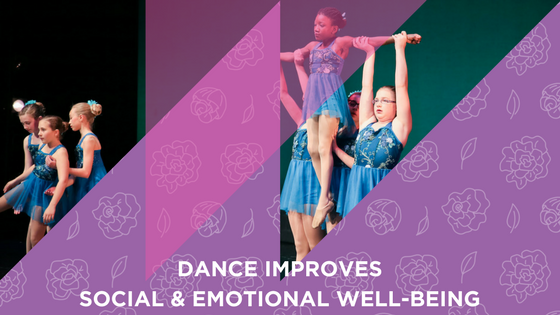Yesterday, in Company classes, I asked a group about the meaning behind their lyrical dance. I was surprised to see how well the dancers understood the meaning behind the song, the movements, and how they had applied the message to their own lives. The song is “Will You Be There” – and the dance is about true supportive friendship. These young girls told me that no matter what happens at school, they sometimes count down the days until they get to come to the studio to be in dance class with their team and best friends who they know will be there for them no matter what. I sat back and listened to this same feeling echoed from all of the dancers – that the dance studio has become a home away from home, a place they feel safe and cared for and valued. They know their teachers care, they know their classmates care, and they come here to do what they love. Participating in dance improves the life of each student.
This has been on my mind a lot – and is a big part of why we do what we do – we teach dance to help train confident and conscientious young people. Some recent research is starting to dig in to the real benefits of dance education – and the science is lining up with what we experience in the studio regularly.
Research is showing a connection between participation in dance classes and social and emotional development. We’ve done a few posts about some big benefits of participating in dance classes – check out how dance increases science and math scores and how dance improves physical fitness.
Dance also offers a host of social and emotional benefits:
- According to a study published in the International Journal of Neuroscience, dance significantly increases serotonin and dopamine levels (feel-good hormones), reducing depression and anxiety, improving mood while reducing interpersonal sensitivity, relieving tension and improving self-esteem.
- Dance classes also foster genuine social encounters, cooperation, interaction and communication with peers and adults.
At a young age, dance classes are often one of the first opportunities a child has to participate in a classroom setting – young dancers learn how to separate from their parent for a short time, how to learn and listen to a teacher, and how to cooperate and interact with their peers. Dance classes provide a safe learning environment so young children learn how to approach challenging concepts. Through childhood, dance classes provide a positive active experience – dancers learn that physical activity is fun and rewarding. Dancers learn that achieving new skills takes practice, and have a safe way to experience achievement (compliments from a teacher, promoting to a higher level) and disappointment (not getting a featured part or not moving to the next level yet). This emotional practice serves as great training for high school, college, and a career! In adolescence and beyond, dance provides an outlet for students to express emotions in a positive and productive way.
All these benefits bundled together demonstrate that when we bring dance into children’s lives, good things happen. And when those well-rounded kids grow into adults, the whole community benefits. In the words of Jeffrey Page, Beyonce’s choreographer, “We have tried—and failed—to save the world through war; the time has now come to try dance…. Dance will save the world.”

